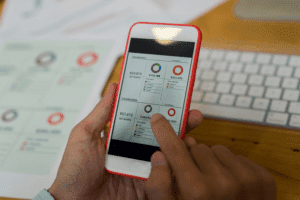Accounting Cycle 101 The 8 Steps Explained

The inventory conversion period is the length of time from the purchase of inventory to the time the sales are made on credit. The general ledger serves as the eyes and ears of bookkeepers and accountants and shows all financial transactions within a business. Essentially, it is a huge compilation of all transactions recorded on a specific document or in accounting software. This formula is used to calculate days for the inventory held on the floor of the business.

Tools and Software for Managing the Operating Cycle

Accelerate payment recovery from delinquent customers and boost cash flow through automated collection workflows. The $36 debit to interest payable will cause the Interest Payable account to go to zero since the liability no longer exists once the cash is paid. Notice that the total interest expense recorded on the bank loan was $39 – $18 expensed operating cycle in January, $18 expensed in February, and $3 expensed in March. The aim of every management should be to reduce the length of operating cycle or the number of operating cycles in a year, only then the need for working capital decreases. The following remedies may be used in contrasting the length of operation cycle period.

Cash
This allows the financial statement user to see what assets will be used and what liabilities will come due in the current year or current operating cycle. The cash conversion cycle measures the number of days between your date of payment for the goods and the date of receiving cash from customers. In simple words, it’s the time between cash going from the business and cash being received by the business. Lower operating cycles indicate more efficient operations, while higher operating cycles point towards weaknesses in the business model. Interpreting the Operating Cycle is crucial to understanding a company’s financial health.
- Next, the transactions are listed in chronological order in the appropriate journal to further allow for a seamless financial statement preparation later.
- The equipment was recorded as a plant and equipment asset because it has an estimated useful life greater than 1 year.
- The business may also consider offering its customers early settlement discounts to ensure cash is received in a short time.
- Conversely, a high DSI may indicate that you have excessive inventory on hand or that products are not selling as expected.
- A longer DPO indicates that you are retaining cash for a more extended period, which can be advantageous for working capital management.
LO4 – Use an adjusted trial balance to prepare financial statements.
- It is the task of Finance manager to manage the operating cycle effectively and efficiently.
- In other word, it is the period of time which elapses between the points at which cash begins to be expended on the production of a product and the collection of cash from its customer.
- Compare current account and saving account options to find the best fit for your financial needs, goals, and lifestyle.
- An analyst can use this cycle to understand a company’s operating efficiency.
- Further, tracking a business’s operating and cash cycle over several years can be a valuable tool for assessing its financial health.
The formula for calculating days sales outstanding (DSO) is (Accounts Receivable / Annual Revenue) × 365, which gives you a clear picture of how long it takes to collect cash from sales. A higher inventory turnover decreases the cash conversion cycle, making it a positive for the CCC and a company’s overall efficiency. The operating cycle typically begins with the purchase of inventory, which can take anywhere from a few days to several weeks, depending on the industry and the company’s credit terms. Understanding the operating cycle is essential for businesses to optimize their cash management and make informed decisions about investments, financing, and inventory management.
What Is The Operating Cycle Formula?
- It’s important to note that the cash operating cycle begins when the business pays the cash and ends when it receives payment from its customers for that sales.
- In Chapters 1 and 2, the preparation of financial statements was demonstrated using BDCC’s unadjusted trial balance.
- A low DSI suggests that your company is efficiently managing inventory and selling products quickly.
- Generally, companies with longer operating cycles must require higher return on their sales to compensate for the higher opportunity cost of the funds blocked in inventories and receivables.
- The operating cycle is the length of time between the company’s outlay on raw materials, wages and other expenses and inflow of cash from sale of goods.
Understanding how to calculate your operating cycle is essential for monitoring and improving your financial performance. The operating cycle formula provides you with valuable insights into the efficiency of your cash conversion process. We’ll explore the formula and its basic concepts, as well as provide practical examples to help you grasp this critical aspect of your business. Accounts receivable management is a critical aspect of your operating cycle, focusing on ensuring that virtual accountant your customers pay you promptly for the goods or services you’ve provided. Delays in receiving payments can significantly extend your operating cycle, impacting your cash flow and overall financial health.
How is the balance sheet derived?

HighRadius provides a powerful, cloud-based Order to Cash solution designed fixed assets to automate and streamline your financial operations. This results in transferring the balance in dividends, a temporary account, to retained earnings, a permanent account. On January 15, Big Dog received a $400 cash payment in advance of services being performed. The Personnel manager by framing sound recruitment, selection, training, placement, promotion, transfer, wages, incentives and appraisal policies can contrast the length of operating cycle.
This period can provide a cushion for businesses, as delaying payments can help maintain liquidity. However, it’s essential to balance this with maintaining good relationships with suppliers. The cost less estimated residual value is the total depreciable cost of the asset. The straight-line method allocates the depreciable cost equally over the asset’s estimated useful life. A contra account is an account that is related to another account and typically has an opposite normal balance that is subtracted from the balance of its related account on the financial statements. Accumulated depreciation records the amount of the asset’s cost that has been expensed since it was put into use.







